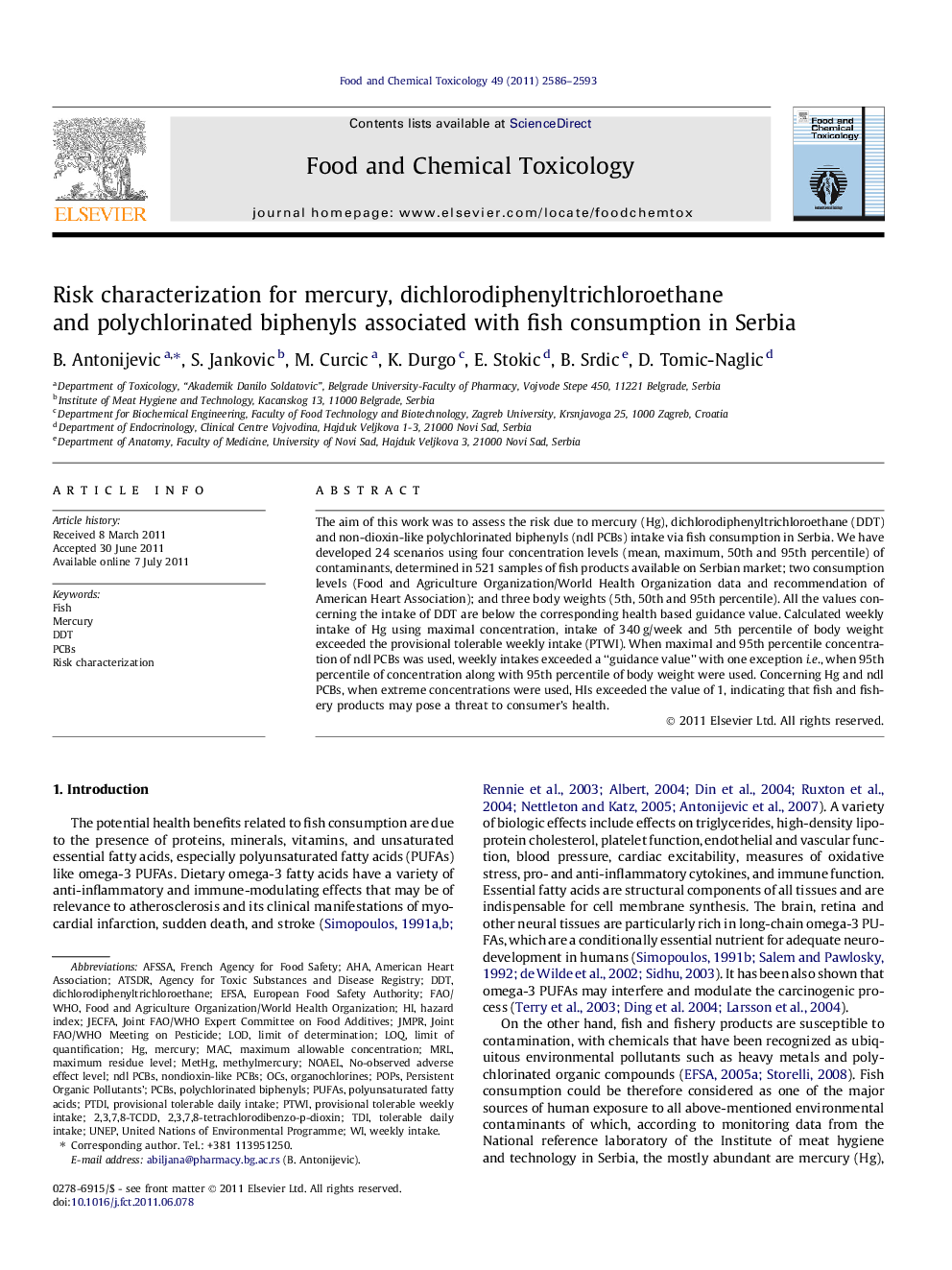| Article ID | Journal | Published Year | Pages | File Type |
|---|---|---|---|---|
| 5854065 | Food and Chemical Toxicology | 2011 | 8 Pages |
The aim of this work was to assess the risk due to mercury (Hg), dichlorodiphenyltrichloroethane (DDT) and non-dioxin-like polychlorinated biphenyls (ndl PCBs) intake via fish consumption in Serbia. We have developed 24 scenarios using four concentration levels (mean, maximum, 50th and 95th percentile) of contaminants, determined in 521 samples of fish products available on Serbian market; two consumption levels (Food and Agriculture Organization/World Health Organization data and recommendation of American Heart Association); and three body weights (5th, 50th and 95th percentile). All the values concerning the intake of DDT are below the corresponding health based guidance value. Calculated weekly intake of Hg using maximal concentration, intake of 340Â g/week and 5th percentile of body weight exceeded the provisional tolerable weekly intake (PTWI). When maximal and 95th percentile concentration of ndl PCBs was used, weekly intakes exceeded a “guidance value” with one exception i.e., when 95th percentile of concentration along with 95th percentile of body weight were used. Concerning Hg and ndl PCBs, when extreme concentrations were used, HIs exceeded the value of 1, indicating that fish and fishery products may pose a threat to consumer's health.
⺠We assessed the risk of Hg, DDT, and ndl PCBs intake via fish consumption in Serbia. ⺠Intake of DDT via fish is below the corresponding health based guidance value. ⺠HI 1 was obtained in scenarios where max concentration of Hg or ndl PCBs was used. ⺠When mean or median concentration of Hg, DDT or ndl PCBs was used risk is negligible.
